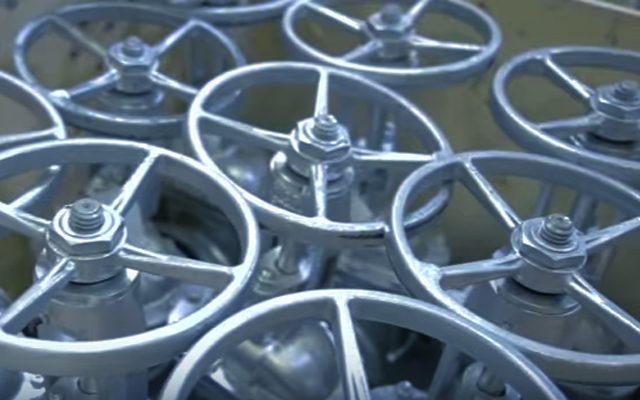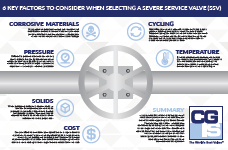Authors: Ross Waters, President of CGIS, and Malcolm Harrison, Fluid Equipment Consulting Inc.
Abrasion, is the process of scraping or wearing away of a softer material by a harder material. Abrasion is one of the three main destructive agents that challenge the operation of valves used in slurry applications. Alone, it can be a devastating effect causing valve failure, but together with erosion and corrosion, it becomes a more significant challenge in valve selection and design.
For abrasion to manifest itself in a valve contained within a slurry system, there must be at least two factors at work:
1. The abrasive fluid must be harder than the components of the valve (greater hardness is relative based upon the valve system pressure, velocity and solids size distribution and in some cases soft elastomeric materials are better than extremely hard ones).
2. There must be contact between the abrasive fluid and the valve components (friction, impingement, sliding, settlement, deflection).
The degree of abrasion is a function of its relative hardness and its energy state, or as is most commonly found, its flowing velocity. In addition, the slurry valve has several discrete stages of existence where its vulnerability can be substantially different from its other states of position.
Slurry isolation valves have at least three position states:
- Normally Open (N/O)
- Normally Closed (N/C)
- Transitioning between N/O and N/C
Assuming that continuous positive flow is occurring, there are differences in transitioning from N/O and N/C:
- N/O – N/C: increase in velocity until isolation
- N/C – N/O: decrease in velocity until fully open (except at initial opening)
There are several methods used for analysis and comparison of the severity of the slurry and these include:
- Hardness scales like Rockwell (B & C), Vickers, Shore, and Brinell
- Miller Number Test for Slurry Abrasivity (per ASTM G75-15)
- Slurry Abrasion Response of Materials (SAR) (per ASTM G75-15)
- Particle size and distribution (PSD)
- Velocity
- Specific rheological investigation
The study of flowing slurries, both in the laboratory and in the field, has revealed some important factors for the successful design of a slurry pipeline and since the Wasp model (1977) other work has been done to refine and better define successful operating regimes. These factors can also influence the design and selection of valves for use in such systems:
- The best flow regime is the one that maintains as much of the solids in suspension equally throughout the pipeline (Homogeneous Flow)
- Accurate definition of the critical velocity
- All voids, steps and abrupt changes within the piping system should be avoided
We discuss Considerations for Valve Design and Manufacture in Part 2 of this article series.
Download the Infographic: 6 Key Factors to Consider When Selecting a Severe Service Valve
About the Authors
As the President of CGIS, Ross Waters has dedicated 35 years of his life to serving and improving the valve industry. Ross started CGIS, a valve distribution company, in 1980 in a small office in Vancouver, Canada. Thirty-five years later, the business has grown internationally and now serves clients and industries worldwide. Ross is the driving force behind increasing awareness of Severe Service Valves and is part of an MSS task force writing its definition. He has attended numerous conferences around the world presenting his paper, “Defining Severe Service Valves” and is well onto establishing himself as the leading expert in Severe Service. Ross is also an avid member of ASTM International G04 and has served as an expert witness.
Malcolm Harrison was born and educated in the UK and received a bachelor’s degree in mechanical engineering. After a successful career with major EPC’s working as a mechanical and piping design engineer, Malcolm relocated to the USA in 1980 to work for Bechtel in San Francisco. He eventually entered the world of valves sales in the early 1990’s. First with a specialist valve sales representative company and then as mining products industry manager with Houston-based, ValvTechnologies. In late 2014 he retired and started his own consulting company, Fluid Equipment Consulting. Malcolm now uses his vast experience to offer subject matter expert services related to all types of valve requirements.






Comments